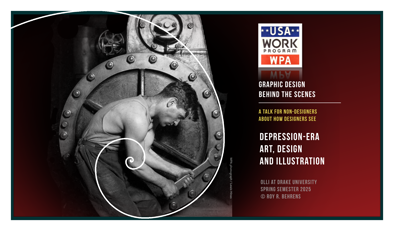There are twenty-five essays in a new book by
Roy R. Behrens about American Midwest history, titled
DREAMS OF FIELDS: MEMORY TRACES OF IOWA’S PAST (Ice Cube Press, 2025). Two of the essays center on events and people who lived in Buchanan County, in the city of
Independence, Iowa.
One of those essays, titled “Occupant of a House by Le Corbusier,” documents the life of Iowa-born artist
William Edwards Cook, who was born in Independence in 1881. Determined to pursue a career as a studio artist, Cook studied drawing and painting in Chicago and New York, then moved on to Paris, where he continued his studies with French Academy masters. He remained in Europe for the rest of his life, living as an expatriate in Paris, Rome, and Palma de Mallorca, Spain.
While Cook never became a well-known artist, his life was notable for other reasons: He became a close and long-term friend of the American writer
Gertrude Stein, who often mentioned him (and Iowa) in her books. It was he who taught her how to drive. He was also the first American to be invited to paint a portrait of
Pope Pius X. Using his inheritance from his parents, Cook commissioned the now-famous Swiss architect
Le Corbusier (who was unknown as the time) to design a Cubist-style residence on the outskirts of Paris, which is now referred to as
Villa Cook or
Maison Cook.
Cook continued to live in Europe until he death in 1959. But he came back to visit his Iowa family on a number of occasions, the details of which he recounted in his correspondence with Stein, of which hundreds of pages have survived, in the archives at Yale University.
In Behrens’ book, a second essay (titled “Horse Racing’s One-Time Pooh-Bah”) recalls the meteoric career of a Buchanan County creamery owner named
Charles W. Williams, who established a horse racing center (called
Rush Park) on the western edge of Independence, in the 1880s. Through amazing successes in horse breeding and racing, he built up enormous wealth, which he then used to construct an unusual kite-shaped race track, and a lavish hotel and opera house (
The Gedney). His phenomenal rise concluded in 1892, in the wake of an economic crash, at which time he moved on to Galesburg, Illinois, where (believe it or not) one of the stable boys was the poet
Carl Sandburg.
Detailed accounts of Cook and Williams as Iowa history legends are provided in Behrens’ book,
DREAMS OF FIELDS: Memory Traces of Iowa’s Past (Ice Cube Press 2025), which
can be purchased online here.


















































